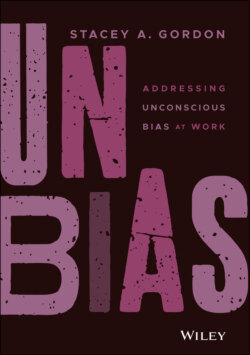Читать книгу UNBIAS - Stacey A. Gordon - Страница 13
Advocacy
ОглавлениеReaching the Advocacy phase is something not very many organizations achieve. Not because of the difficulty, but because of the prior stages. So many companies try to begin with the Action phase when they are actually in the Awareness phase. However, without knowing that, they apply task‐oriented thinking to what should be strategic planning, resulting in an initiative that is short‐lived, under‐resourced, and without direction.
Lisa's department managers have finally bought into the value of a diverse and inclusive workplace as a result of upper management's valuation of its concepts. In turn, employees at all levels have begun to embrace the newly revised policies and procedures that address the unconscious bias we all harbor, remove the barriers the systems have created, and weave diversity and inclusion initiatives into the very foundation of the company and its mission. While she knows that her company, and the people in it, can never be completely bias‐free, she is optimistic that the conversations will continue in a way that allows issues to be identified and addressed with more expediency.
In the phase of Advocacy, not only do you have current‐state knowledge of your organization, with an understanding of where your organization is as it relates to foundational DEI (diversity, equity, and inclusion) concepts and metrics, but also you have grasped the “why” of moving forward along the path to becoming an inclusive organization. Your organization leaders understand, support, and have aligned on the strategy. They fully support the concept that diversity and inclusion within organizations is not only focused on the traditional notions of diversity. They have consistently reviewed and revised their practices, policies, and procedures and are role‐modeling accountability, transparency, and authenticity. In the phase of advocacy, the cultivation of an inclusive workplace is reached when every person in the organization is working together to make sustainability of diversity and inclusion a priority.
There is no single “right thing” or “right way” to support diversity and create a culture of inclusion in the workplace. This framework provides a guide, and throughout this book the various methods and recommended activities can be implemented in numerous configurations. Don't get hung up on the definitions or the structure; instead focus on your strategy and successful attainment of your goal.
